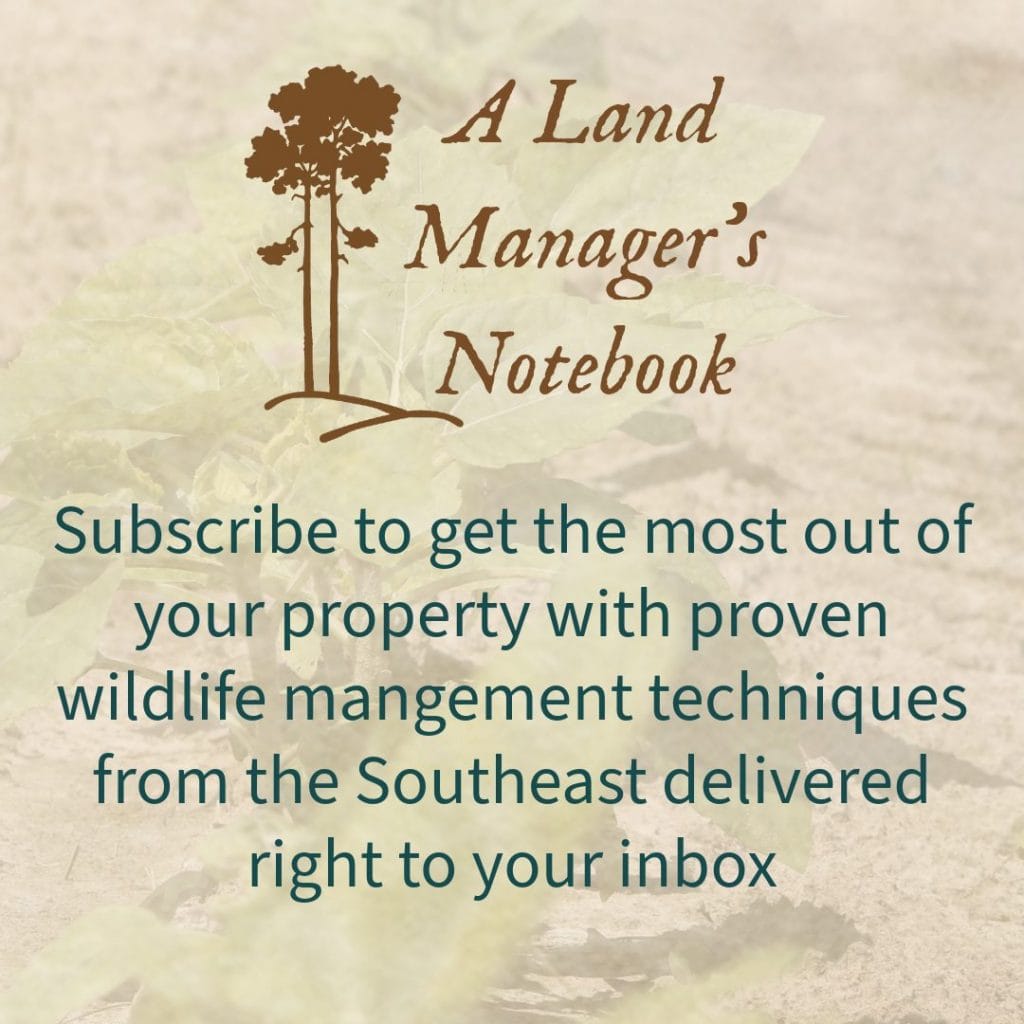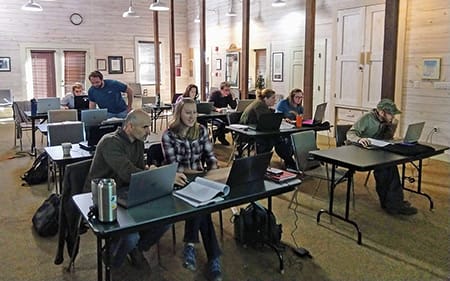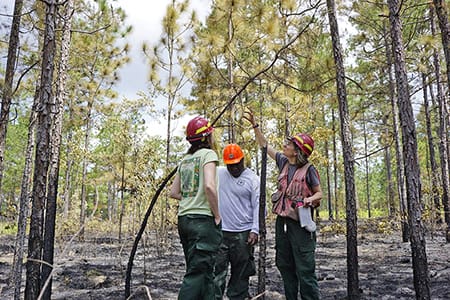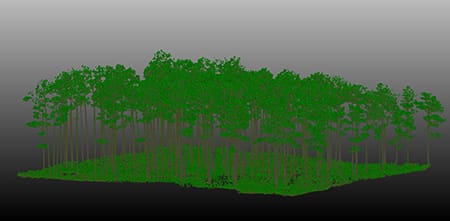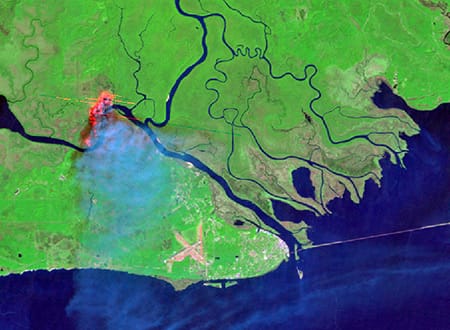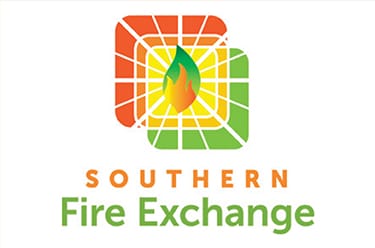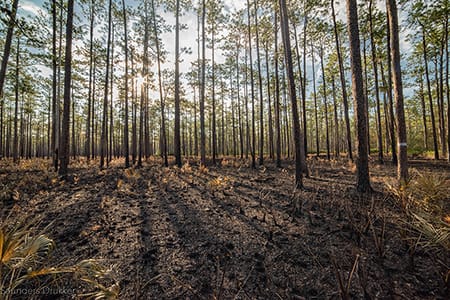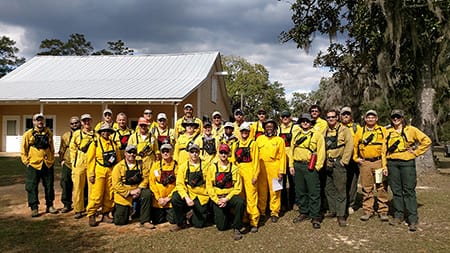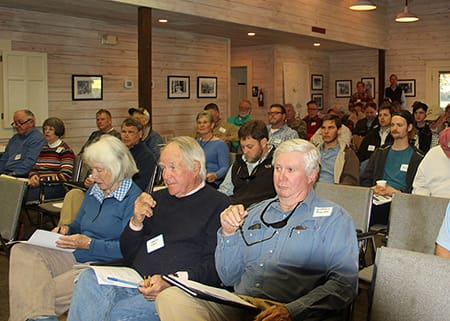A database developed by Tall Timbers coalescing prescribed fire permit data across the Southeast is a first step in answering bigger research questions and serve as a valuable advocacy tool to continue promoting prescribed fire’s widespread use.
The Prescribed Fire Permit Database created by Tall Timbers Geospatial Lab and Fire Ecology Program was recently featured on the cover of the scientific journal Fire.
It looks at state-level records between 2010 and 2020 of burn location, size, and calendar days to evaluate spatial and temporal patterns in a dozen Southeastern states.
“The South is going through all these changes; Climate change, population increases, and possible changes in air quality regulations,” said Geospatial Database Administrator Karen Cummins. “We’re hoping to have data set out so we can start answering bigger questions.”
The data highlighted hot moments and hot spots for prescribed fire.
Thomas County in Georgia had the most acres burned across the decade and Leon County in Florida had the third highest. The remaining top 10 counties are all in Florida, but there are hot spots in Albany, east Alabama, and the Carolinas among the top 25 locations.
Where there is heavy prescribed fire use, quail habitat management is right alongside.
There is also a connection between the areas with frequent burning and the proliferation of rare species like the Red-cockaded Woodpecker and the Gopher Tortoise, both keystone species in the Red Hills, Cummins found.
“These hot spots are also the primary locations where otherwise rare or declining species have stable or growing populations,” she wrote in her paper.
It should be noted the states where there appears to be little prescribed fire use is partially due to differences reporting or lack of a formal burn authorization system.
The database was also able to pinpoint when during the year burns are taking place.
January to April is when the burn frequency is the greatest with the most acres burned for the 6-8 weeks between February and March, the prime burn window in old field habitat.
It’s a key time of year when burning is being done to benefit quail heading into the nesting season.
Private landowners are burning substantially smaller burn units – 26.5 acres on average – but accounted for 61% of the total 56 million acres burned over the decade of data.
Interestingly, although public land area is much smaller – just 18% of all the land in the Southeast – it accounted for 39% of all of the burned acreage. The average burn unit on public land was 192 acres.
The database catalogs fire permits across multiple states and could prove valuable in managing smoke emissions by evaluating open burn windows over the entire region that are not being tapped by a majority of fire practitioners, said Tall Timbers’ Research Director Morgan Varner.
At a time when a proposed rule by the U.S. Environmental Protection Agency to tighten air quality restrictions on fine particle emissions could affect the ability to use prescribed fire, the database could prove useful in managing shared air space.
Tall Timbers has stepped up engagment at the federal level as an advocate for prescribed fire use on private and public lands. In addition, we have deployed new air quality research in Southwest Georgia and are raising funds to support additional science focused on prescribed fire and air quality management.
Being able to analyze open burn periods to minimize the amount of smoke in the air could make a difference in continuing the widespread use of prescribed fire for habitat management and wildfire risk reduction.

An analysis of prescribed fire permits found that most practitioners in the Southeast were burning in February and March.
It allows researchers and practitioners to look at the landscape more broadly to help manage air quality across state lines.
“Air quality is increasingly becoming the reason why you’ll get a permit or not,” Varner said. “To reduce emissions in certain areas, we can look at available windows during the year where we are not taking advantage of burning opportunities. We’ve got to figure some way to spread out fire use.”
The model of analysis has potential to expand to other regions, including the western U.S., where fire is being reintroduced to help curb catastrophic wildfire.
A key takeaway is the amount of private land burning, Varner said, which points to the need for extension work with landowners to continue encouraging burning and to educate the public about the benefits of prescribed fire.
The permit database provides a model to mesh together fire permitting, the Southeast Fire Map – which maps historic fire data – and satellite-based vegetative analysis, Varner said.
“It’s a future game changer for tracking fire use.”




